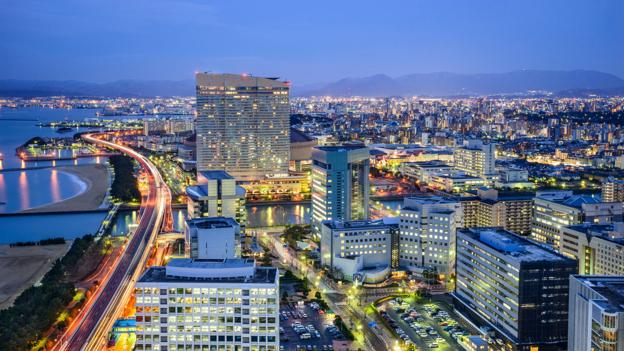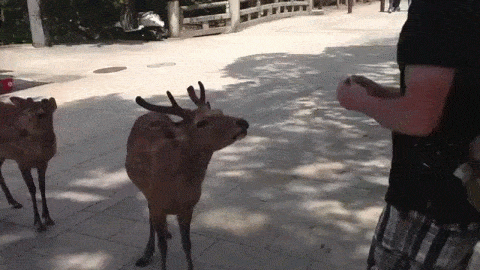Hello from across the world. Japanese 101: Greetings
Greetings are an important part of any language because they allow you to connect and communicate with others, even as a beginner. Especially in Japanese as the Japanese culture is based around proper social etiquette.

Greetings are an important part of any language because they allow you to connect and communicate with others, even as a beginner. Especially in Japanese as the Japanese culture is based around proper social etiquette. Just learning “Good Morning” or “Good Afternoon” in Japanese, will help you when you try to talk to the locals as they see you are making an effort and will appreciate it. This normally leads to them making a similar effort to use English to when you start to struggling with your Japanese.
So, before we jump into the greetings, I thought I do a similar thing to the vowel paragraph in the numbers blog, but this time about the Hiragana characters: わ (wa) and は (ha). For some context, Hiragana is a phonetic syllabary, alongside with Katakana which is another phonetic syllabary. In most cases, each syllable is represented by one character in each syllabary. Hiragana is used in many cases, such as writing articles or miscellaneous words that have no kanji form or an obscure kanji form.
There is a rule for writing the わ (wa) and は (ha). When わ (wa) is used as a particle, it is written as ha. So, in the past, the Japanese used wa as a particle in sentences like Konnichi wa (Today is) or Konban wa (Tonight is) so it can be seen written as ha although you would say wa. But now in current Japanese dialogue, Konnichiwa (Good Afternoon/Hello) or Konbanwa (Good evening) are fixed greetings.

Ohayōgozaimasu/Ohayō (Good Morning/Morning):
Most time of the time, you will be using Ohayōgozaimasu while travelling as it is best to keep formal with anyone you don't know. But in the cases of you are speaking to a friend or find yourself in a casual setting, you could use the word Ohayō to say morning.
Konnichiwa (Good Afternoon):
There is a misunderstanding with Konnichiwa as most westerners think Konnichiwa means only hi when it actually means "good afternoon.". But nowadays it used as a general greeting by anyone.
Another way to say hello is Moshi-Moshi (もしもし). But don't go around saying Moshi-Moshi to random people. You use Moshi-Moshi when answering the telephone.
Konbanwa (Good Evening):
So as there is a phase for a good afternoon, it makes sense for there to be a phase for a good evening which is konbanwa. It is normally used as an informal word you can use to address anyone in a friendly manner.
Oyasuminasai (Good Night):
I don't really have much to say about Oyasuminasai but one fun fact is without the O, yasuminasai means "Go to sleep!" so anyone who is a general, commander, parent, etc, here is your readymade command!
Sayonara (Goodbye):
The Japanese have many ways to say goodbye in different situations. Sayonara is used when bidding farewell to someone you will not see again for some time, such as friends leaving on a vacation. Ittekimasu is used if you are only leaving for a short amount of time like just leaving for work. The closest literal translation would be “I’ll go and I’ll come back”. The person you are talking to should reply with itterasshai which literally meaning “please go and come back”.
There is another phase you should learn if you are going for work in Japan which is shitsurei shimasu (失礼します。) when you’re parting from your superior, which translates literally to “I’m being rude by leaving your presence”. It is also said when you are about to enter someone's house. Another phrases that can used when entering a house is Ojamashimasu (おじゃまします), which means “I will disturb you”. When leaving you, you should say Ojamashimashita (おじゃましました).
One greeting you might hear it but might never use is Irasshaimase (いらっしゃいませ) which is used by a business owner or employee to welcome you to their store.
Dewa Mata (See You Later):
The phrase dewa mata is used sometimes instead of Ittekimasu as it is like saying "see you later" in English. You could also tell your friends you will see them tomorrow with the phrase mata ashita.
O-genki desu ka/genki (How are you?):
This is one of the few Japanese phrases that I know by heart but forget what it means all the time. The key thing I want to look at is genki (元気) as genki is not just how are you. Genki can also be a reply to how are you as it means I'm well (元気です). So, therefore, an example of a conversation could be:
Ben-san: Genki (How are you?)
Andy-san: Genki (I'm well)
Hajimemashite (Nice to meet you):
This greeting means “Nice to meet you”. You use it when you are meeting someone for the first time as the phrase comes from a conjugation of the verb “hajimeru” (始める), which means to start. So, you are "starting" a new relationship with the person you have met.
How to greet?
So now you know some greetings, let's talk about how you should greet someone. Bow like a deer!

Bows (ojigi) are categorised into Eshaku (15°), Keirei (30°), and Saikeirei (45° - 70°). Eshaku (会釈) is a very casual form of greeting in business, usually performed between colleagues with the same status, or when more formal gestures are deemed unnecessary, like when one casually bumps into someone on the street.
Keirei (敬礼), is the most used variation of ojigi as it is more formal and respectful impression than eshaku. Possible scenarios for its usage include greeting clients, entering a meeting, and thanking superiors at work.
Saikeirei (最敬礼), is mostly used when greeting very important personnel, apologizing, or asking for big favours as shows the uttermost respect towards the other party. Additionally, as saikeirei is only used in grave situations, one is expected to stay still at the bowing position for a relatively long time to show one's respect and sincerity.
In terms of what you should do with your hands when bowing, men are expected to keep them naturally at both sides of their legs, whereas women often place one hand on top of the other in the center somewhere below their abdomen.
You are expected to greet every person individually, even if they are in a group. That means that if there is a room of 77 people then you will have to bow and say Konnichiwa 77 times!
Conclusion:
As I said in the conclusion of my "Itchy, knee, san? Japanese 101: numbers" post, greetings would have seemed like the better option for the first Japanese 101 blog. But I am still happy with my decision to do numbers first. So, it is time to say a big thank you to everyone reading this week's blog. In terms of next week, it will be on bins and trashes cans, where I investigate the mystery of how Japan is so clean with so few public bins. Also thank you to Dave for catching any mistakes that I make. So, until next week, arigatou gozaimasu and sayōnara!
